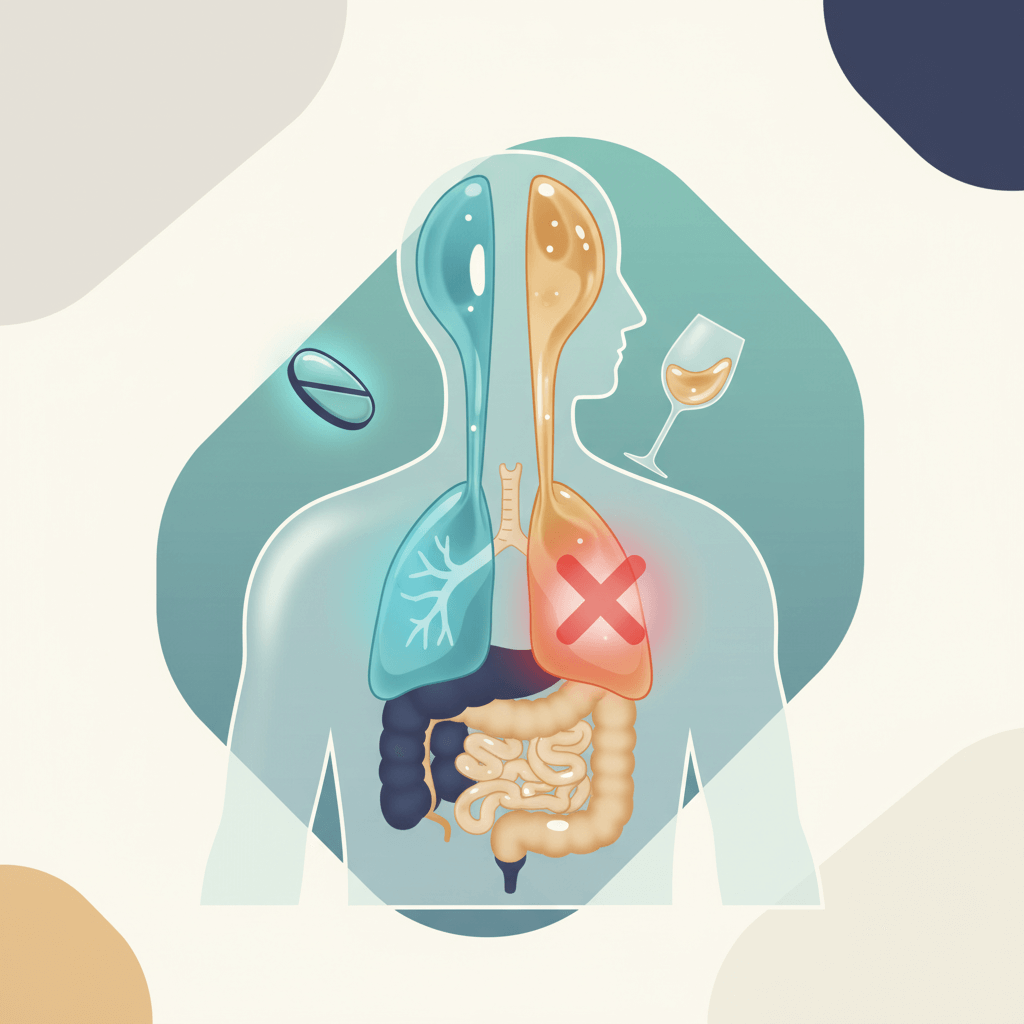Understanding Addiction
Addiction is a complex condition that is influenced by a variety of factors, including mental health and substance use. By exploring the co-occurrence of mental health and substance use, as well as the symptoms of substance use disorders, we can gain a better understanding of what causes addiction.
Co-Occurrence of Mental Health and Substance Use
It is not uncommon for individuals with mental health problems to also experience substance use disorders. In fact, more than one in four adults living with serious mental health problems also has a substance use problem. Certain mental health problems are more frequently associated with substance use problems. This co-occurrence can be attributed to various factors, including self-medication, attempts to alleviate symptoms, or shared risk factors.

Symptoms of Substance Use Disorders
Recognizing the symptoms of substance use disorders is essential in understanding addiction. These symptoms can manifest in behavioral, physical, and social changes. Behavioral changes may include increased secrecy, changes in social circles, and neglecting responsibilities. Physical changes can range from weight loss or gain to changes in sleep patterns. Social changes may involve strained relationships, isolation, or withdrawal from activities once enjoyed.
Understanding the co-occurrence of mental health and substance use, as well as recognizing the symptoms of substance use disorders, is crucial in comprehending the complexities of addiction. It is important to remember that addiction is a chronic condition that alters the way a person's body functions [2]. Genetic makeup and environmental factors both contribute to the development of addiction, with genetics playing a role in predisposition and the environment influencing behavior and susceptibility [2]. By delving deeper into these factors, we can gain insight into the underlying causes of addiction and work towards prevention and effective treatment strategies.
Genetic Influences on Addiction
When exploring the factors that contribute to addiction, it becomes evident that genetics play a significant role. Understanding the genetic influences on addiction can provide valuable insights into the development and treatment of substance use disorders.
Role of Genetics in Addiction
Scientists estimate that genetics account for approximately 40-60 percent of an individual's risk for substance use disorder. Many genes contribute to addiction, and each person inherits a unique combination of gene variations that can influence their vulnerability to addiction. This genetic predisposition, combined with environmental factors, determines an individual's risk for developing a substance use disorder.
It is important to note that addiction is a complex trait influenced by variations in multiple genes and environmental factors. Therefore, it is challenging to identify a single genetic cause for addiction. Instead, each person has a unique combination of gene variations that can either increase their risk or provide protection against addiction.
Family History and Genetic Predisposition
Substance use disorder often runs in families, suggesting that addiction can be passed from parent to child through genes. Family history plays a crucial role in understanding an individual's vulnerability to addiction. Having close relatives with a history of addiction can increase an individual's risk for developing a substance use disorder.
Research has identified specific genes associated with addiction, such as genes involved in the reward pathway and the regulation of neurotransmitters. However, it is important to note that genetic factors alone are not solely responsible for addiction. Environmental factors also play a significant role in determining an individual's risk.
Understanding the genetic basis of addiction is essential for developing targeted and effective treatments. By identifying the specific genes involved in addiction, researchers can develop gene therapies and drugs that modify gene activity and correct signals or pathways associated with addiction. This approach aims to restore proper brain function and reduce the risk of substance use disorders.
By recognizing the role of genetics in addiction, individuals and healthcare professionals can have a better understanding of the factors contributing to substance use disorders. This knowledge can help guide prevention efforts, early interventions, and the development of personalized treatment approaches to address addiction effectively.
Environmental Factors in Addiction
While genetics play a role in addiction, environmental factors also significantly contribute to the development of addiction. The environment in which a person lives, their family dynamics, peer influences, trauma, and mental health all play a crucial role in the risk of addiction.
Impact of Environment on Addiction
The environment in which an individual lives can greatly influence their susceptibility to addiction. Various environmental factors, such as family, school, peers, community, trauma, and mental illness, can contribute to the risk of developing addiction.
Family environment plays a crucial role in shaping a person's behavior and attitudes towards substance use. Growing up in a home where substance abuse is prevalent can increase the likelihood of developing addiction later in life. Additionally, family dynamics, such as poor communication, lack of support, and dysfunctional relationships, can contribute to the risk of addiction.
School environment also plays a role in addiction risk. Academic difficulties, peer pressure, and exposure to drug use within the school setting can influence a person's likelihood of experimenting with substances.
Peers have a significant impact on an individual's behavior, especially during adolescence. The influence of friends who engage in substance use can increase the risk of addiction. Peer pressure and the desire to fit in are powerful factors that can lead to substance abuse.
Community factors, such as the prevalence of drug use and availability of substances, also contribute to addiction risk. Living in a community with high rates of substance abuse and limited access to resources and support can increase the likelihood of developing addiction.
Traumatic experiences, such as physical or sexual abuse, domestic violence, neglect, or other adverse childhood events, can significantly impact an individual's risk for addiction. Trauma can lead to disruptions in certain neural networks associated with an increased likelihood of developing substance use disorders and mental health issues.
Mental illness is another environmental factor that can contribute to addiction risk. Individuals with mental health disorders may turn to substances as a means of self-medication or coping with their symptoms. The co-occurrence of mental health disorders and substance use disorders is common, and each can exacerbate the other.
Environmental Risk Factors
Environmental risk factors for addiction can be categorized into six main categories: family, school, peers, community, trauma, and mental illness. Here are some examples of risk factors within each category:
Risk Factor Category and Examples
Family: Substance abuse within the family, dysfunctional family dynamics, lack of parental supervision or involvement
School: Academic difficulties, association with peers who engage in substance use, lack of effective substance abuse prevention programs
Peers: Peer pressure to experiment with substances, social acceptance of substance use, influence of friends who use drugs
Community: Easy access to drugs, high prevalence of substance abuse within the community, limited resources for prevention and treatment
Trauma: Childhood abuse (physical, sexual, emotional), exposure to violence, neglect, adverse childhood events
Mental Illness: Co-occurring mental health disorders, lack of access to appropriate mental health treatment, self-medication of symptoms
Understanding the impact of environmental factors on addiction is crucial for prevention and intervention efforts. Creating supportive environments, improving access to resources and treatment, and addressing underlying trauma and mental health issues are important steps in reducing the risk of addiction and promoting healthier outcomes for individuals. Additionally, strong social connections and support systems can play a protective role in preventing and overcoming addiction.
Childhood and Adolescent Influences
During childhood and adolescence, various factors can contribute to the development of addiction later in life. Understanding these influences is essential for prevention and early intervention efforts. In this section, we will explore two key influences: early substance use and childhood mental disorders.
Early Substance Use and Risk Factors
Initiating alcohol and drug use before adulthood is a significant risk factor for the development of substance use disorders later in life. Studies have shown that individuals who start using alcohol before the age of 11 have a higher risk of developing chronic alcohol dependence [5]. Additionally, the age at which a person first experiences intoxication serves as a predictor of the risk for substance use disorder in adulthood.
Childhood Mental Disorders and Addiction Risk
Childhood and adolescent mental disorders can also play a role in increasing the risk of addiction in adulthood. Several studies have found associations between specific mental disorders and the risk of substance use disorders later in life.
- Attention-Deficit/Hyperactivity Disorder (ADHD): Individuals diagnosed with ADHD during childhood or adolescence have an increased risk of developing alcohol, nicotine, and other drug use disorders in adulthood.
- Conduct Disorder (CD) and Oppositional Defiant Disorder (ODD): These disruptive behavior disorders are associated with an elevated risk of alcohol, nicotine, other drug use, and any substance use disorder in adulthood.
- Depression: Childhood or adolescent depression has been linked to an increased risk of alcohol, nicotine, and any substance use disorders in adulthood [5].
It is important to note that while these mental disorders are associated with an increased risk of addiction, they do not guarantee addiction will occur. The relationship between childhood mental disorders and addiction risk is complex and influenced by various factors such as genetics, environmental factors, and individual resilience.
Understanding the influences of childhood and adolescence on addiction risk can help guide prevention efforts and early intervention strategies. By identifying and addressing risk factors early on, it is possible to mitigate the potential for addiction and promote healthier outcomes.
Brain Changes and Addiction
Understanding the connection between addiction and the brain is essential in comprehending the underlying causes of this complex condition. Addiction is a chronic disease that alters the way a person's brain functions and their ability to function normally. In this section, we will explore the neurological basis of addiction and how it affects decision-making.
Neurological Basis of Addiction
Addiction has a profound impact on the brain, hijacking normal brain processes related to reward, motivation, and decision-making. When someone becomes addicted to drugs or alcohol, their brain chemistry undergoes significant changes. The brain's reward system, which is responsible for reinforcing pleasurable experiences, becomes altered. Substance use triggers the release of neurotransmitters such as dopamine, creating intense feelings of pleasure. Over time, the brain adapts to these surges of dopamine and becomes less responsive to natural rewards, leading to a diminished sense of pleasure from everyday activities.
Brain Alterations and Decision-Making
Repeated substance use can result in damage to the prefrontal cortex, the part of the brain responsible for decision-making and impulse control. This damage can make it difficult for individuals to recognize the harms associated with addictive substances and make rational decisions to stop using them.
Furthermore, addiction can lead to heightened stress and anxiety in the absence of drugs or alcohol, as the brain's stress and reward systems have become dysregulated [6]. This dysregulation can contribute to cravings and the compulsion to seek out drugs or alcohol despite negative consequences.
Understanding the biological basis of addiction highlights the need for comprehensive treatment approaches. Addiction is a long-lasting and complex brain disease that changes key brain regions responsible for survival, making it challenging for individuals to overcome addiction through willpower alone. Successful treatment often involves a combination of behavioral therapy, medications, and support systems to address the biological, psychological, and social aspects of addiction.
By recognizing the neurological changes associated with addiction, we can develop a greater understanding and empathy for individuals struggling with this disease. It is important to approach addiction as a chronic condition that requires comprehensive support and treatment to promote long-term recovery.
Recovery Environment
Creating a supportive environment is crucial for individuals seeking recovery from addiction. The recovery environment plays a significant role in maintaining sobriety and preventing relapse. By understanding the impact of the environment and the role of social connections, individuals can establish a strong foundation for their recovery journey.
Creating Supportive Environments
A supportive environment is one that fosters growth, provides stability, and encourages healthy habits. To create such an environment, it is important to identify and eliminate triggers that could potentially lead to relapse. This may include removing substances from the home, avoiding places or situations associated with substance use, and surrounding oneself with individuals who support recovery.
According to Tranquil Shores, creating a low-stress environment and avoiding major triggers can help support recovery and encourage a sober living environment. By establishing routines, engaging in activities that promote physical and mental well-being, and maintaining a safe and peaceful space, individuals can create an environment that supports their recovery journey.
Support and accountability are also critical components of a supportive environment. Seeking professional counseling or participating in addiction support groups can provide individuals with the necessary guidance, encouragement, and understanding. These resources can also extend support to loved ones who are essential in the recovery process.
Role of Social Connections
The influence of social connections on addiction and recovery cannot be overlooked. Research has shown that a person's social environment significantly influences their risk for addiction and relapse, particularly among young people [4]. Individuals who spend time with individuals engaging in substance use are more likely to adopt similar behaviors. Therefore, changing social environments and surrounding oneself with sober friends can be instrumental in the recovery journey.
Building a strong support system is crucial. Surrounding oneself with individuals who are supportive, understanding, and committed to sobriety can provide a sense of belonging and encouragement. These connections can offer guidance during challenging times and serve as a reminder of the commitment to recovery.
Family and friends play a pivotal role in the recovery environment. Their support, understanding, and involvement can contribute to the success of an individual's recovery journey. By educating themselves about addiction, attending therapy sessions or support group meetings, and providing a stable and nurturing environment, loved ones can positively impact the recovery process.
By creating a supportive environment and fostering strong social connections, individuals can enhance their chances of successful recovery. The recovery environment plays a significant role in maintaining sobriety, reducing the risk of relapse, and promoting overall well-being.
References
[1]: https://www.samhsa.gov/mental-health/mental-health-substance-use-co-occurring-disorders
[2]: https://www.tranquilshores.org/blog/2017/october/how-your-environment-affects-addiction/
[3]: https://learn.genetics.utah.edu/content/addiction/genes
[4]: https://www.tpoftampa.com/environmental-factors-and-their-role-in-addiction/
[5]: https://www.ncbi.nlm.nih.gov/pmc/articles/PMC7747788/
[6]: https://newsinhealth.nih.gov/2015/10/biology-addiction













